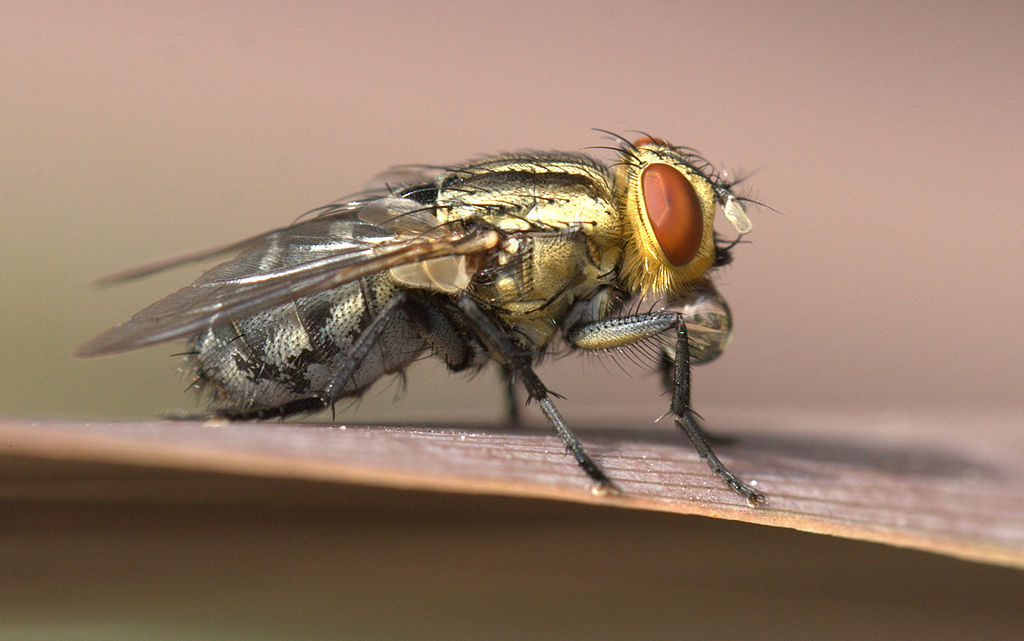SERVICE REQUEST?
Fill out the form below.
Find our nearest location
Your Local Office

Flesh Fly
Attribution: Toby Hudson, [CC-BY-SA-3.0], via Wikimedia Commons
Size:
Medium-sized flies from 1/4-inch to 1/2-inch in length.
Color:
Dark gray with three stripes on top of the thorax in front of the wings; eyes are usually red; a checkerboard pattern is often present on top of the abdomen.
Behavior:
Like blow flies and bottle flies, flesh flies are important scavengers in nature as they are one of the first insects to reach a dead animal. These flies are part of the decomposition process that recycles nutrients back into the soil. The maggots of these flies may be used by forensic entomologists to place the time of death in murder cases. They also breed in garbage containers and dumpsters.
These flies are extremely common and can be found one to a few at a time in homes or businesses during the warm summer months. They are attracted to buildings by food odors and also warm/cool air currents emitted through cracks around doors and windows, or through doors propped open for ventilation purposes. The sudden appearance of dozens of flesh flies within a building signals a potential dead rodent, bird or other animal in the wall, ceiling, attic or crawlspace.
In most cases involving flesh flies around homes, the problem is twofold: (1) flies are being attracted to the building by trash containers or pet manure and (2) openings (e.g. doors) exist that are permitting flies to enter. To minimize problems with flies, take the following steps:
- Throw trash away in trash cans in plastic bags. Bags reduce odors associated with garbage and trash thus attracting fewer flies to the area.
- Locate trash receptacles as far from the building as possible. Those flies that are attracted to the area will therefore be away from the back door.
- Keep doors and windows closed unless they are equipped with tight-fitting screens.
- Ensure all edges of doors and windows have tight weatherstripping. Flies can squeeze through amazingly small cracks.
If the presence of these flies is due to a dead animal within the building, finding the location of the carcass and its removal is necessary, but is not easily accomplished.
Family Name:
Family Sarcophagidae
Read What Our Clients
Are Saying
My Terminix tech Scott is the best! He is professional, courteous and absolutely thorough about his job. Thank you for sending such a blessed tech to my house. Hamlet, NC
This letter is to say how pleased we are here at Morreene West Apartments with your services. We are very pleased with the technician, Christopher. He does a great job. Durham, NC
Terminix has consistently offered our apartment complex reliable, competent service. We are completely satisfied with their knowledgeable representative who is always punctual and does a superior job for us every time. Chapel Hill, NC
I would like to take the time to thank you for giving us such great service here at Carver Pond Apartments. Your Pest Technician Christopher Mitchell has provided us with excellent service over the last few months. Christopher is such a great help to us in providing helpful information so that we can better serve our residents here at Carver Pond. Durham, NC
SERVICE REQUEST?
Fill out the form below.